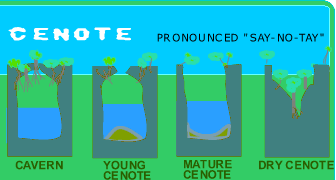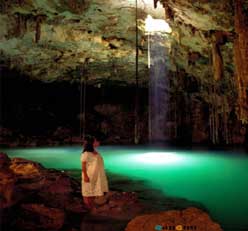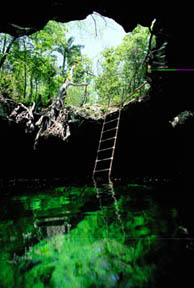
|
 |
|
There are two types of cenotes (pronounced say-no-tay). These open pits filled with water were used for everyday household needs. Other cenotes were used for sacrifices to the gods. At Chichén Itzá, offerings for jade, gold and copper have been found in addition to human skulls. |
 |
|
| A cenote is formed very gradually over time. It begins with an underground cavern filled with water, and gradually the limestone wears away overhead. (see photo at right) |

|
|
|
The creation of a cenote happens
like this: YOUNG CENOTE - As erosion continues, the thin ground roof collapses, leaving an open, water-filled hole. MATURE CENOTE - Over thousands of years, erosion gradually fills in the hole making it more shallow. The Cenote of Sacrifice at Chichen Itza is in this stage. |
 |
|
| DRY CENOTE - As erosion continues, the cenote can completely fill, becoming a dry, shallow hole with trees and other vegetation. | ||






